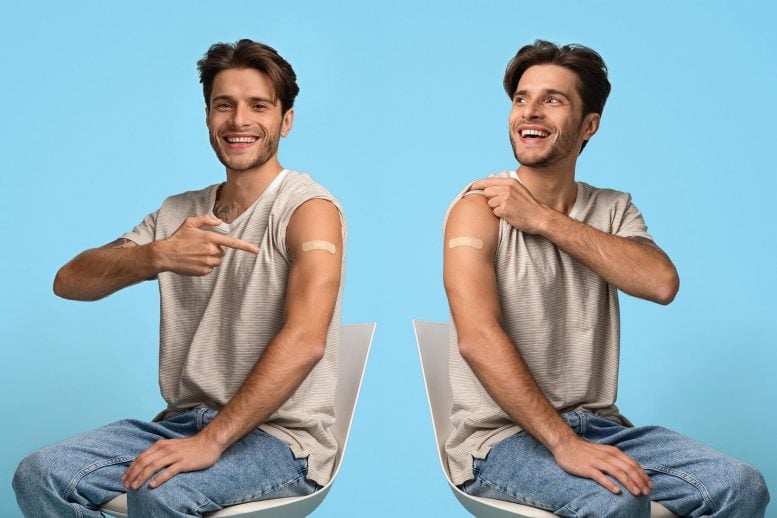The Importance of Vaccine Placement: Understanding Its Secret Power

A recent study has found that consecutive vaccinations administered in the same arm can likely enhance the immune response. These findings pave the way for further investigation into vaccine administration techniques.
Research carried out amidst Germany's COVID-19 vaccination drive revealed that individuals who received both doses of the vaccine in the same arm experienced a stronger immune response. This insight may contribute to optimizing vaccination strategies.
Professor Martina Sester shares how the seemingly basic question that led to this discovery had been overlooked in the past. Professor Sester values the initiative of her PhD student Laura Ziegler, who directed her attention towards this particular inquiry.
Experts like Professor Sester, who specializes in Transplant and Infection Immunology at Saarland University, and Laura Ziegler, generally focus on evaluating the efficacy of vaccinations and vaccines. However, the question of whether consecutive vaccination shots should be given in the same arm or in different ones has not been addressed until now.
Laura Ziegler has confirmed a shift towards understanding this matter. "Our study indicates that ipsilateral vaccinations, where the vaccine is injected twice into the same arm, generate a stronger immune response compared to contralateral vaccinations, where the first and second doses are administered in different arms," she explains.
The COVID-19 vaccination campaign in Germany served as the perfect study environment. Laura Ziegler and Martina Sester compiled a reliable dataset from 303 people who received both mRNA vaccine doses from Biontech at the start of Germany's vaccine drive.
The study reported a higher number of cytotoxic CD8+ T cells, or "killer T cells," in individuals who received both shots in the same arm, two weeks post the booster shot. "In the ipsilateral subjects, we found 'killer T cells' in 67% of cases as opposed to the 43% detected in the contralaterally vaccinated subjects," Ziegler explains. This suggests that an ipsilateral vaccination could possibly offer more protection against the SARS-CoV-2 virus.
However, Martina Sester clarifies that the number of antibodies was not higher in the ipsilaterally vaccinated patients, unlike killer cells, antibodies do not directly destroy the virus but prevent it from causing further damage. She further adds that antibodies in subjects who received both vaccinations in the same arm were found to be more effective in binding to the viral spike protein as compared to the contralaterally vaccinated subjects.
Currently, there is a significant knowledge gap when it comes to examining the impact of the location of the primary and booster vaccination shots. "The pandemic, although unfortunate, has provided us with reliable data that allows us to answer questions like these," says Professor Sester.
The early phase of the vaccination campaign saw several volunteers who had no exposure to the SARS-CoV-2 virus. This ensured that the study's findings were not tampered with. For medical scientists like Laura Ziegler and her supervisor Professor Martina Sester, the pandemic presented a distinctive opportunity to investigate immune response mechanisms.
Laura Ziegler, being cautious, only analyzed data from individuals who received two Biontech SARS-CoV-2 vaccine shots. Further research is needed to support her study's implications for other consecutive vaccinations, such as flu or tropical disease vaccinations. However, it appears probable that certain vaccinations will generate a stronger immune response if injected into the same arm, emphasizing the importance of the seemingly naive question at the beginning of the study.




